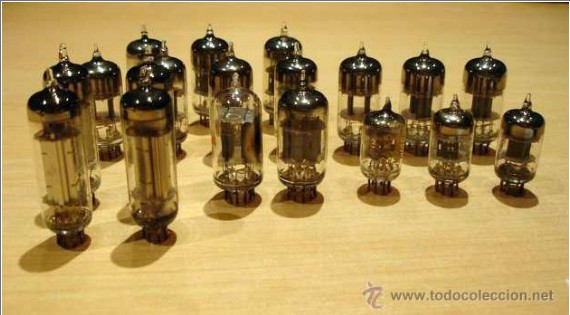Vacuum tubes
Use
As basic components of electronic circuit, they can take part in many different processes: detection of electromagnetic waves, amplification and rectification of electric currents, etc.

Description
In all the cases, independently of its use and complexity, they consist of two electrodes locked in a glass container which has been vacuumed inside.
This simple disposition is known as vacuum diode or vacuum tube. Very often, other metallic grids are added. This way, more complex devices are formed: triodes, tetrodes, pentodes etc.
Functioning

History
The first diode was invented by John Ambrose Fleming in 1904 (as a detector of radio waves) and the first triode on 4th March, 1906, by the Austrian physicist Robert von Lieben. However, the present design was made by the American Lee De Forest, who registered his patent on 29th January, 1907.
The wide variety of the applications of the triode made possible the development of others types of vacuum lamps such as the tetrode, developed by the German physicist Walter H. Schottky in 1916 and the pentode, invented by the Dutch Gilles Holst and Bernardus Dominicus Hubertus Tellegen, in 1926.













